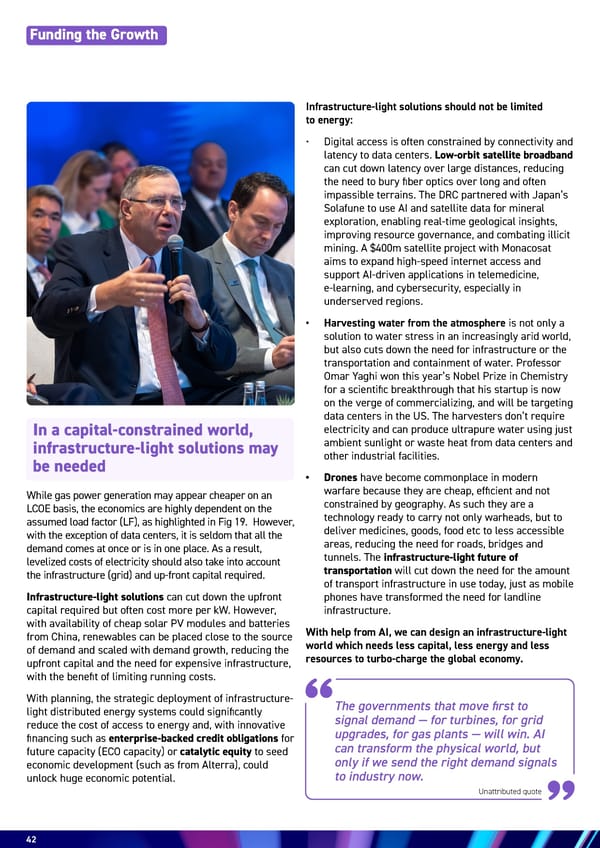42 While gas power generation may appear cheaper on an LCOE basis, the economics are highly dependent on the assumed load factor (LF), as highlighted in Fig 19. However, with the exception of data centers, it is seldom that all the demand comes at once or is in one place. As a result, levelized costs of electricity should also take into account the infrastructure (grid) and up-front capital required. Infrastructure-light solutions can cut down the upfront capital required but often cost more per kW. However, with availability of cheap solar PV modules and batteries from China, renewables can be placed close to the source of demand and scaled with demand growth, reducing the upfront capital and the need for expensive infrastructure, with the benefit of limiting running costs. With planning, the strategic deployment of infrastructure- light distributed energy systems could significantly reduce the cost of access to energy and, with innovative financing such as enterprise-backed credit obligations for future capacity (ECO capacity) or catalytic equity to seed economic development (such as from Alterra), could unlock huge economic potential. Infrastructure-light solutions should not be limited to energy: • Digital access is often constrained by connectivity and latency to data centers. Low-orbit satellite broadband can cut down latency over large distances, reducing the need to bury fiber optics over long and often impassible terrains. The DRC partnered with Japan’s Solafune to use AI and satellite data for mineral exploration, enabling real-time geological insights, improving resource governance, and combating illicit mining. A $400m satellite project with Monacosat aims to expand high-speed internet access and support AI-driven applications in telemedicine, e-learning, and cybersecurity, especially in underserved regions. • Harvesting water from the atmosphere is not only a solution to water stress in an increasingly arid world, but also cuts down the need for infrastructure or the transportation and containment of water. Professor Omar Yaghi won this year’s Nobel Prize in Chemistry for a scientific breakthrough that his startup is now on the verge of commercializing, and will be targeting data centers in the US. The harvesters don’t require electricity and can produce ultrapure water using just ambient sunlight or waste heat from data centers and other industrial facilities. • Drones have become commonplace in modern warfare because they are cheap, efficient and not constrained by geography. As such they are a technology ready to carry not only warheads, but to deliver medicines, goods, food etc to less accessible areas, reducing the need for roads, bridges and tunnels. The infrastructure-light future of transportation will cut down the need for the amount of transport infrastructure in use today, just as mobile phones have transformed the need for landline infrastructure. With help from AI, we can design an infrastructure-light world which needs less capital, less energy and less resources to turbo-charge the global economy. In a capital-constrained world, infrastructure-light solutions may be needed Unattributed quote Funding the Growth The governments that move first to signal demand — for turbines, for grid upgrades, for gas plants — will win. AI can transform the physical world, but only if we send the right demand signals to industry now.
 Energy & AI: Twin Engines Turbo-Charging Economic Growth Page 41 Page 43
Energy & AI: Twin Engines Turbo-Charging Economic Growth Page 41 Page 43